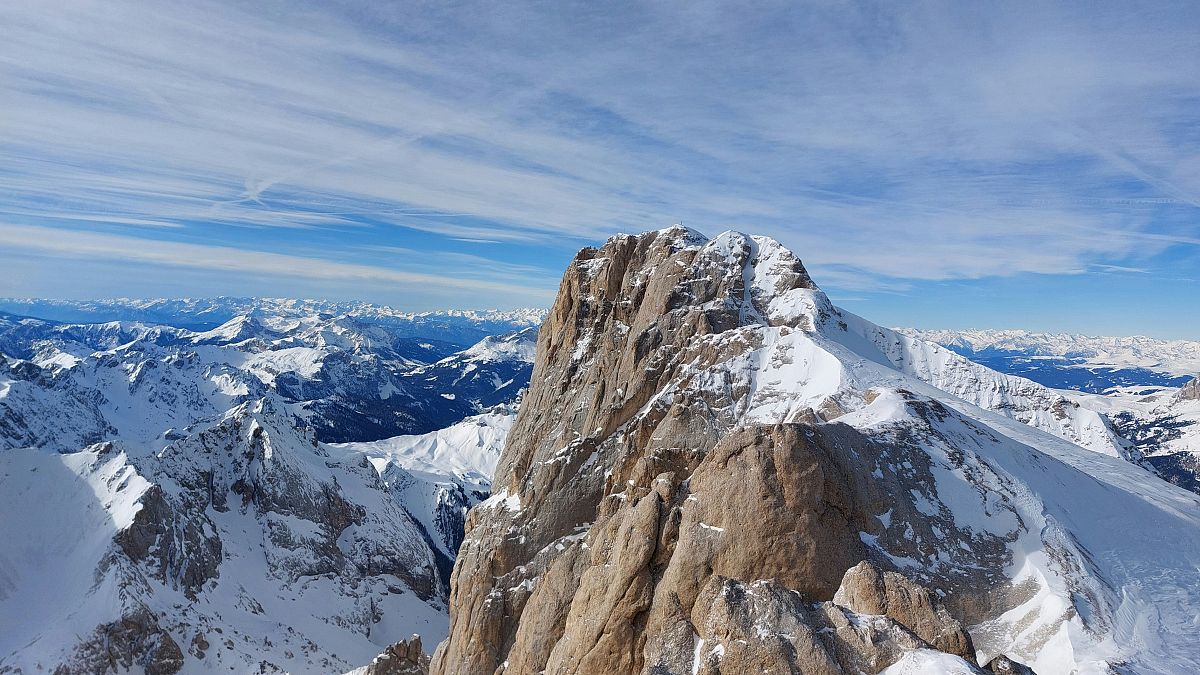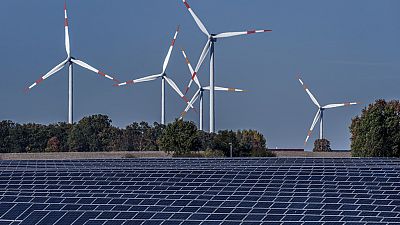Since 1888, the glacier has lost more than 80 per cent of its surface area.
The Marmolada is the highest peak in Italy’s northeastern mountain range and is known as the ‘Queen of the Dolomites’.
Its spectacular glacier - the largest in the Dolomites - is a haven for skiers in winter and mountaineers in summer.
However, scientists studying the ice cap say its future is bleak.
The glacier has seen 70 hectares of its surface disappear in the last five years - the equivalent of 98 football fields.
Largest glacier in the Dolomites could disappear by 2040
The Marmolada glacier is losing 7 to 10 centimetres of thickness per day, according to scientists, and risks melting away completely by 2040.
Since the beginning of scientific measurements in 1888, the ice cap has retreated by 1,200 metres.
The alarm bells have been sounded by the organisers of a campaign launched by the environmentalist group Legambiente, the International Commission for the Protection of the Alps, Cipra, and the Italian Glacier Committee.
The project, known as the ‘Carovana dei ghiacciai’ (Caravan of Glaciers), involves monitoring glaciers and highlighting the dramatic impact of climate change on their health.
The Marmolada glacier has been the subject of special observation by the Caravan committee for several years - especially after the tragic collapse of the serac (a column of glacial ice) in July 2022 which resulted in the deaths of 11 mountaineers.
Marmolada glacier is now in an ‘irreversible coma’
“The Marmolada glacier is dying and covering it with sheets is therapeutic obstinacy with the sole aim of protecting the ski slopes,” a spokesperson for Legambiente said in a press conference, adding that the ice cap was now in an “irreversible coma”.
Measurements from 136 years ago show it extended for about 500 hectares and was as big as 700 football fields.
Since 1888, it has recorded an area loss of more than 80 per cent and a volumetric loss of more than 94 per cent.
In 2024, the maximum thickness measured was 34 metres. The accelerated melting of the ice at high altitudes is giving way to a desert of white rock and new ecosystems are emerging, experts say.
“The data makes [the Marmolada] emblematic of the suffering of all Alpine glaciers - the glacial body is poorly fed and suffers from climatic pressure and human interference,” said Marco Giardino, president of the Italian Glaciological Committee.















